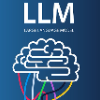Domain-specific Entity Recognition holds significant importance in legal contexts, serving as a fundamental task that supports various applications such as question-answering systems, text summarization, machine translation, sentiment analysis, and information retrieval specifically within case law documents. Recent advancements have highlighted the efficacy of Large Language Models in natural language processing tasks, demonstrating their capability to accurately detect and classify domain-specific facts (entities) from specialized texts like clinical and financial documents. This research investigates the application of Large Language Models in identifying domain-specific entities (e.g., courts, petitioner, judge, lawyer, respondents, FIR nos.) within case law documents, with a specific focus on their aptitude for handling domain-specific language complexity and contextual variations. The study evaluates the performance of state-of-the-art Large Language Model architectures, including Large Language Model Meta AI 3, Mistral, and Gemma, in the context of extracting judicial facts tailored to Indian judicial texts. Mistral and Gemma emerged as the top-performing models, showcasing balanced precision and recall crucial for accurate entity identification. These findings confirm the value of Large Language Models in judicial documents and demonstrate how they can facilitate and quicken scientific research by producing precise, organised data outputs that are appropriate for in-depth examination.
翻译:暂无翻译



